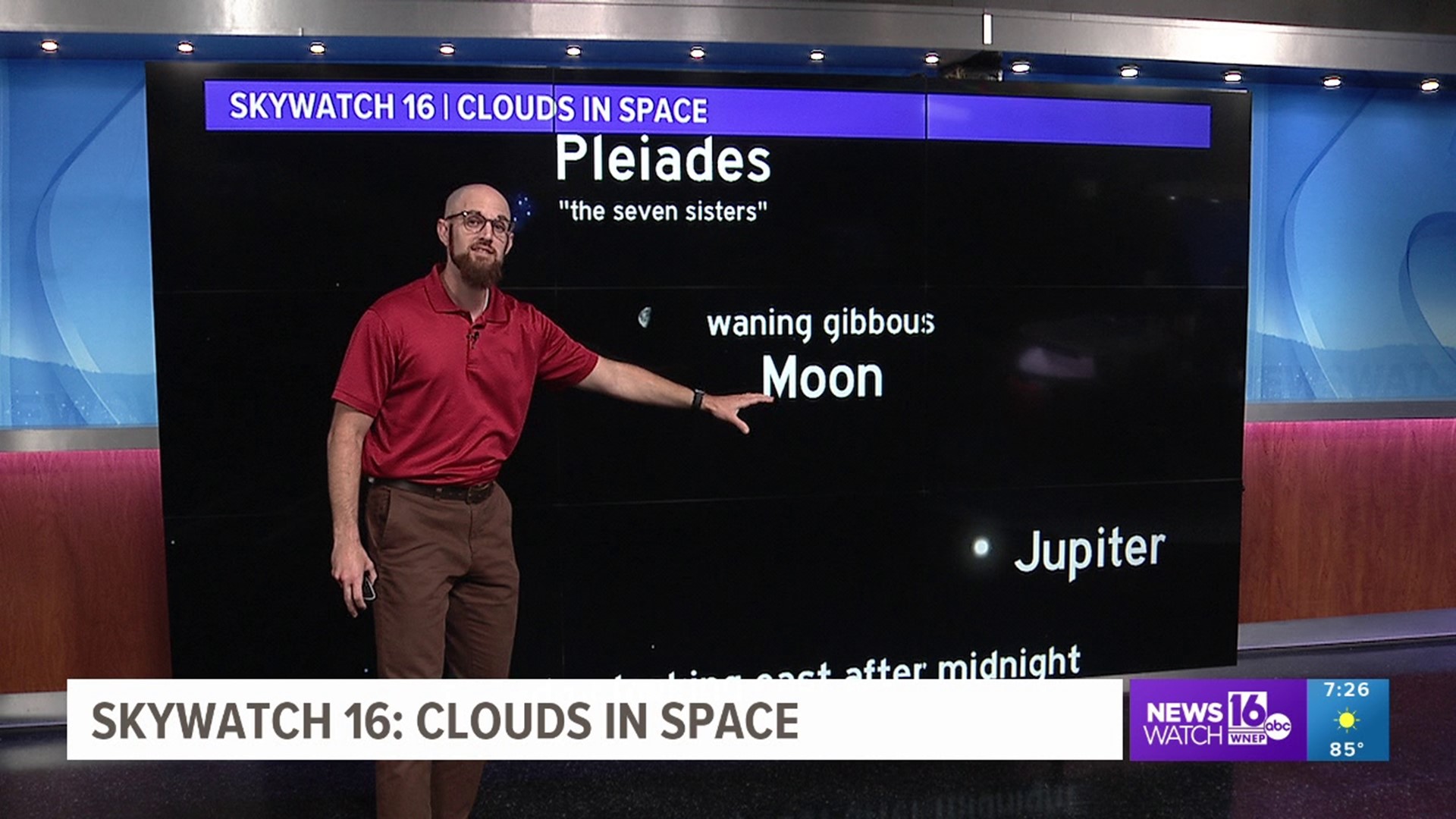PENNSYLVANIA, USA — Tuesday night, after midnight, skywatchers will be able to see our waning crescent moon, Jupiter, and the Pleiades star cluster all lined up.
This will be best viewed after midnight and before dawn on Wednesday.
The Pleiades star cluster, named M45, was first cataloged by French astronomer Charles Messier.
Galileo was the first one to spot it through a telescope.
Messier cataloged 110 night sky objects that amateur astronomers still try to find today!
The Pleiades star cluster is unique because when viewed through the Hubble Space Telescope, NASA scientists can see an interstellar cloud being destroyed by one of the brightest stars within M45!
You can learn more about that by clicking here.
We're also hoping for clear early-morning skies later this week.
There's a good chance to see the International Space Station fly over on both Thursday and Friday mornings before sunrise.
See past Skywatch 16 segments on YouTube:

